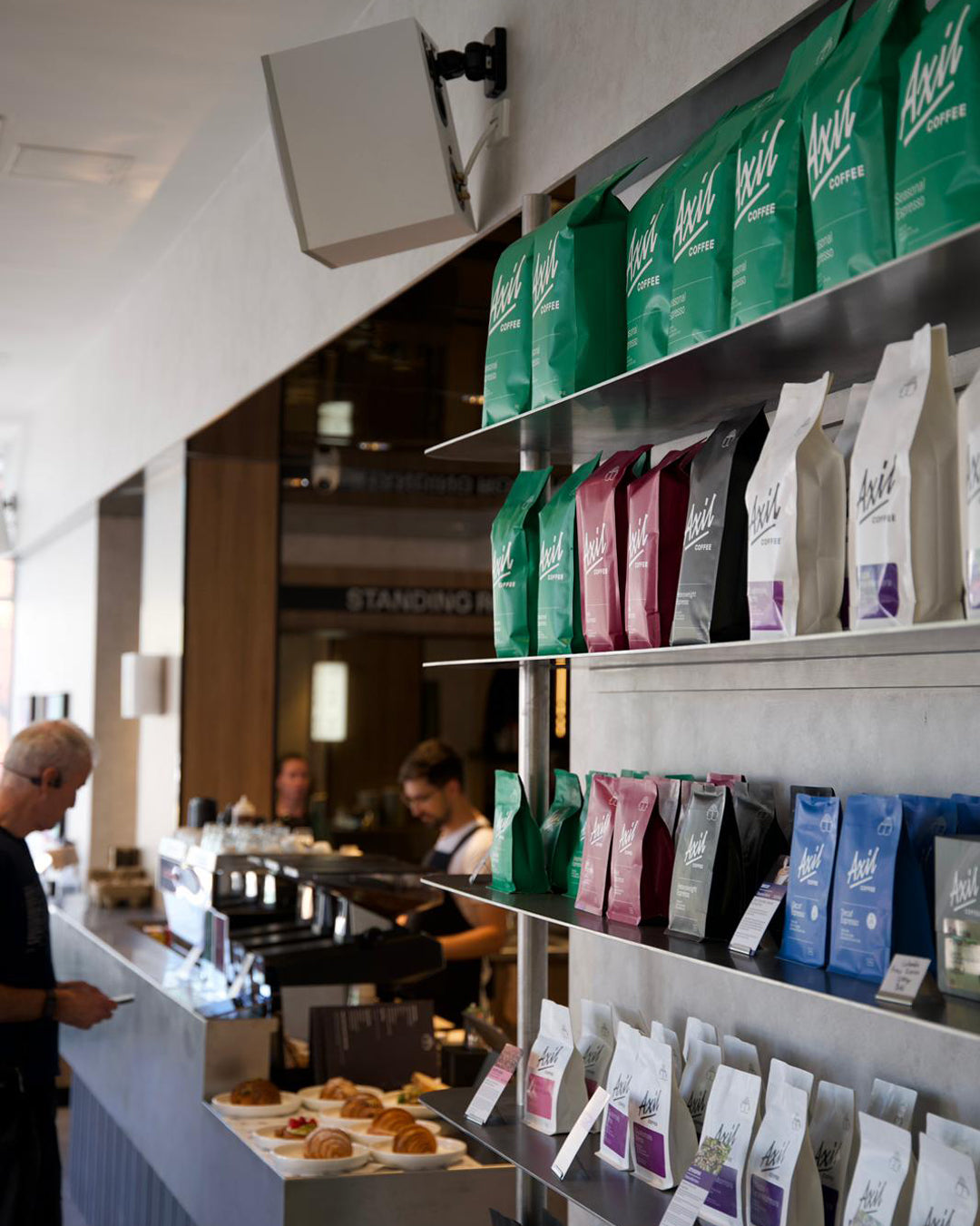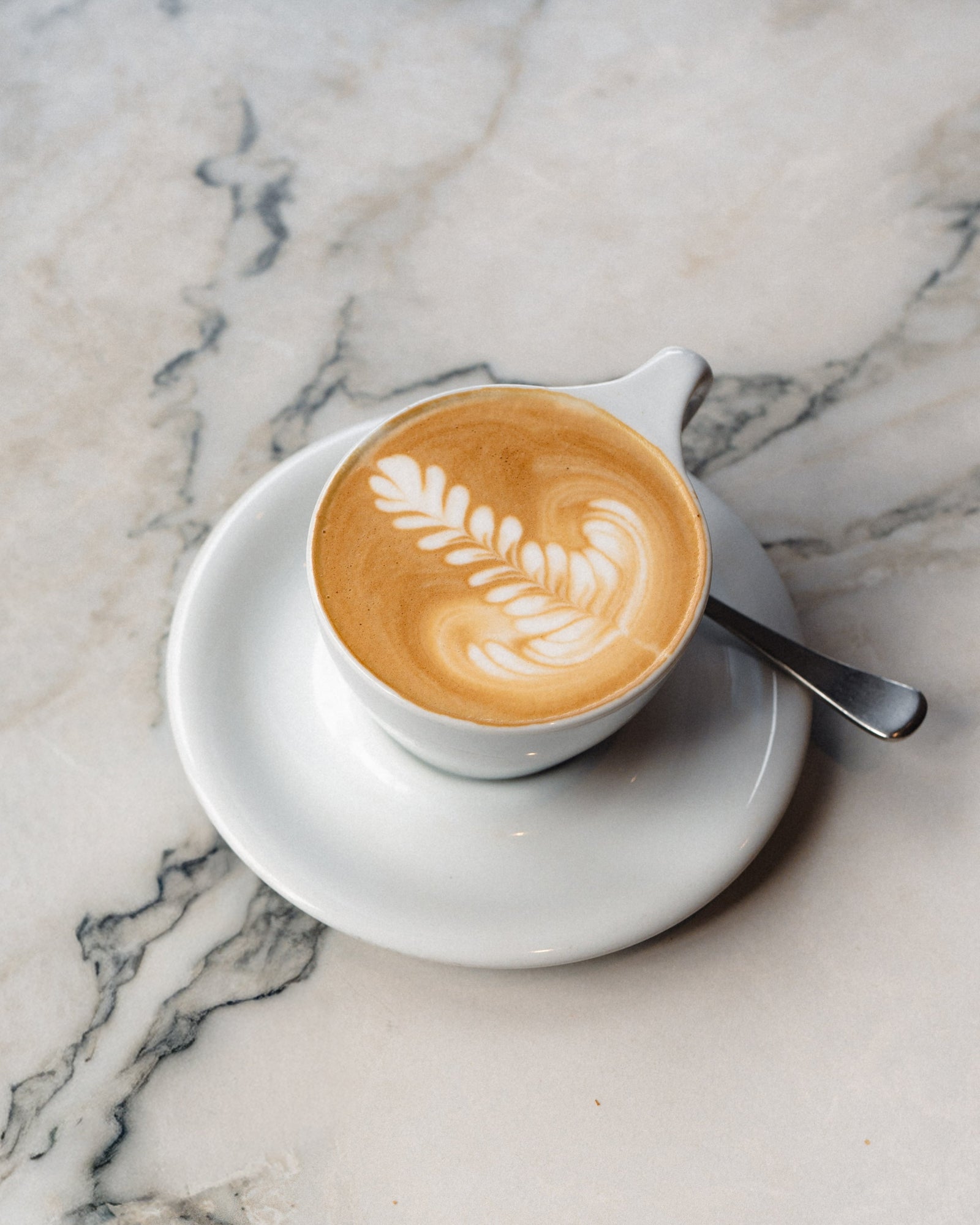Your Cart is Empty
Free Shipping over $75
Free Shipping over $75

5 Tips for Better Coffee at Home
Want to know how to make a great cup of coffee at home, just like our Australian Barista Champion? We chatted with Jack Simpson to get his top tips and tricks for brewing café-quality coffee in your own kitchen.
Making coffee at home has never been more accessible, with a variety of equipment options available to suit all budgets. However, there's often a big disparity between drinking coffee made by a skilled barista behind a commercial machine and what we can achieve at home. It can be challenging to navigate exactly what makes the difference, aside from expensive equipment. That's why we wanted to share these expert tips to help you bridge that gap and create café-quality coffee from your kitchen.
Tip 1: Buy / Use The Freshest Coffee Possible.
Axil Coffee: So, what would you say your number one tip is?
Jack Simpson: You’ve got to buy the freshest coffee possible. When I use coffee for competition, I aim to serve it within 8 to 10 days. The reason for this is that when coffee is roasted, it retains a significant amount of gas, and over time, it begins to degas, releasing a substantial amount of CO2 in the process. If I serve it in that 10 day window, that’s where I find the coffee is most articulate. This has a greater influence on espresso roasts than on filter roasts. The best ‘window’ to drink coffee is between 10-30 days after roast, depending on the roast degree. If I serve it too fresh, it can taste bitter, and anything beyond this window will slowly start to lose flavour and intensity. So while coffee can be enjoyed long after roast, I'm always looking at the roast dates before I buy, so it falls within this window and I can serve the most flavourful coffee with just the "right" intensity I'm looking for.
Axil Coffee: How about the coffee you find in the supermarkets?
Jack Simpson:The coffee you buy from the supermarkets or traditional style coffees often don’t include the roast date. This can be problematic when wanting to serve optimal coffee. Purchasing beans from a reputable coffee roaster, like Axil Coffee, means you know exactly when the coffee was roasted which can ensure that you consume it within the optimal time frame.

Tip 2: Grind Your Coffee Just Before Extraction.
Axil Coffee: How about grinding your coffee? Does that affect how good a cup of coffee is?
Jack Simpson:It’s best to grind your coffee just before extraction! I mentioned before about the degassing of the coffee and the release of CO2, which leads to be higher bitterness and less articulation. Well, when we grind our coffee, it accelerates the aging process. This is due to the surface area of ground coffee compared to beans - ground coffee has a much greater surface area. So, to have the best version of the coffee you buy, I highly recommend grinding it just before brewing.

Tip 3: Freeze Your Coffee.
Axil Coffee: Does a certain method of storage make a difference for the coffee?
Jack Simpson: The freezer at home is a great place to store your coffee. Sometimes you buy a kilo of coffee and it could take you up to 8 weeks to get through it. So you can split that bag in half, using half now as fresh as possible and freezing half for later.
Axil Coffee: How should we store our coffee in the freezer?
Jack Simpson:There’s a few considerations to think about. We’re not going to just put the bag of coffee in the freezer just as is. Firstly, make sure to freeze it as fresh as possible to slow down the aging process right away. Secondly, it has to be transferred into an air tight container or ziplock bag with minimal ‘head space’ or empty space in the bag or container. This is to avoid ice build up, condensation and oxidation. I typically transfer my coffee into small single serve tubes, ready for when I want to use it. You can also grind the beans whilst still frozen but it will impact the particle size and extraction times, so I recommend letting it defrost slightly beforehand.

Tip 4: Measure All The Variables
Axil Coffee: Should we be measuring out our coffee and water prior to brewing?
Jack Simpson:Just like baking a cake, you need to measure all the variables to consistently make good coffee, time and time again. The variables to start with are weighing the dry coffee grounds known as ‘coffee in’, the liquid coffee extracted known as ‘coffee out’ and the time of the overall extraction time. A good starting point is a 1:2 ratio. I start with 20g of coffee in and measure 40g coffee out, extracted in 25-30 seconds. You can also scale these measurements dependent on the basket size or however much coffee can comfortably fit in.

Tip 5: Clean Your Equipment
Axil Coffee: We’re guessing the way we treat our equipment affects the final taste of our coffee too?
Jack Simpson:If your machine and grinder aren’t clean, the quality of coffee dramatically decreases. Fresh water is a perfect solvent for fresh coffee, but if water is passing through a dirty shower screen before extracting, its ability to extract is impacted. Considering espresso is approximately 90% water, it’s essential to keep the machine as clean as possible. This means you should be making sure you’re putting chemicals inside the group head every night to ensure that the screens are nice and clean with a good scrub, as well as making sure your porta filters and the baskets are nice and clean as well.
This also applies to the grinder. Some grinders have large chambers inside, which means they may hold a lot of excess ground coffee. Some can actually hold up to 30 grams of already ground coffee within the chamber. Which means that if the last coffee you made was ground the day before, the coffee you’re drinking today could be a day old!
There’re some cleaners that you can just run through your grinder. This will soak up all the oils and push all the spent coffee out. Another tip is to grind a little bit of coffee out before you make your first coffee of the day so that any old ground coffee sitting in there from the last time you made your coffee can be pushed out.
Axil Coffee:Thanks Jack for taking us through your tips! They’ll come in handy for the next time we want a quality brew, at home.
Head on over to shop your favourite beans online,or visit your closest Axil Coffeetoday to grab a bag and test these tips at home for yourself!
Also in Axil Coffee Roasters
Subscribe
Sign up to get the latest on sales, new releases and more …



